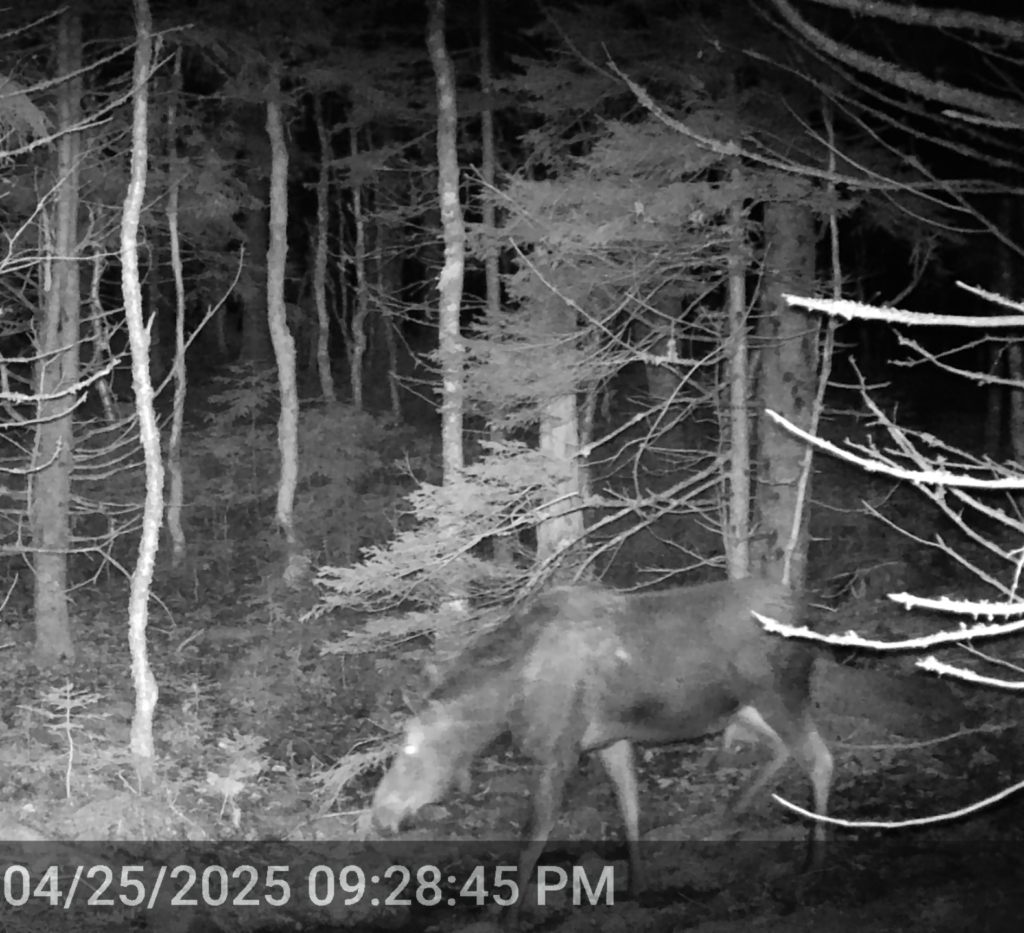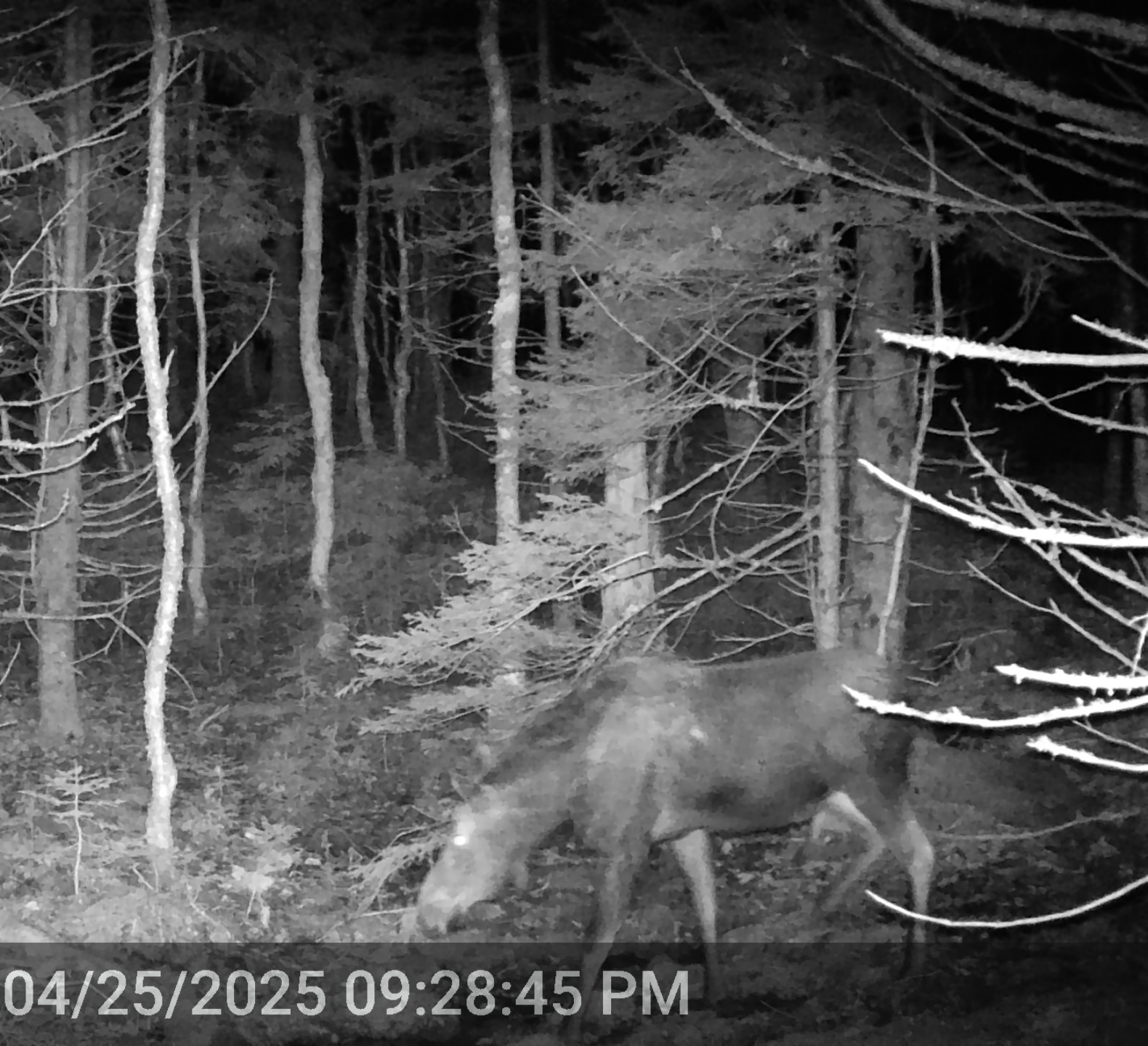Updated October 24th, 2025
Nature Nova Scotia President Bob Bancroft sent the letter below to Premier Houston earlier this year, detailing our concerns regarding planned high production forestry activity (clearcuts) in the vicinity of moose habitat at Dunraven Bog Nature Reserve in Queens County.
The updated Recovery Plan for the Endangered Mainland Moose, which the natural history network had to take the province to court in 2019 to get released, identified for the first time the legally required core habitat necessary to maintain and recover moose on mainland Nova Scotia. Though the province is required to protect core habitat for listed species at risk, the Endangered Species Act does not prescribe what that protection should look like. Rather, it is the assumption that the province will implement the recommendations of documents like the Recovery Plan. For moose, these recommendations span from designating more formal protected areas to adopting better forest management practices in moose habitat. As a result, and because moose are widely distributed across the province and require a variety of different habitat types over the year, the province has gotten away with providing minimal protection measures for identified moose habitat.
In his letter, Bob suggested that a landscape-level approach to forest management was vital for conserving the dwindling moose population in mainland Nova Scotia, as recommended by both the Mainland Moose Recovery Plan and the Lahey Independent Review of Forest Practices in Nova Scotia. As such, allowing for high production forestry immediately adjacent to a protected area known to support moose is inappropriate and a violation of government’s supposed commitment to ecological forestry. If high production forestry has a place anywhere in the Nova Scotian landscape, it is not in moose habitat.
Minister of Natural Resources Tory Rushton responded to Bob’s letter on October 16th, stating that the province is committed to sustainable forestry management and that the allowance for clearcutting within moose habitat and immediately adjacent to a protected area was based “in science,” though it did not detail how a landscape-level assessment happened concerning these parcels. The Minister also stated that the Mainland Moose Special Management Practice, which Nature Nova Scotia has criticized for not leaving enough moose habitat after harvest, would be applied to this harvest area. The response also seemed to suggest that the higher volume of wood (or we should say, pulp) taken from this high production parcel will reduce the amount of wood taken from other parcels, implying that there is some kind of quota for public lands forest harvest volume, which would be news to us. The Minister’s response is copied below.
Bob's Letter On Behalf of Nature Nova Scotia
Minister Rushton's Response
October 16th, 2025
“Dear Bob Bancroft:
As Minister of Natural Resources, I am responding on behalf of the Premier to your letter of July 20, 2025, regarding high production forestry and Mainland Moose in Digby County, Nova Scotia.
The Province has adopted a new approach to forestry management as recommended in the Independent Review of Forest Practices in Nova Scotia (Lahey Report 2018). We are committed to the long-term sustainable management of crown land. Ecological forestry is a fundamental shift that protects ecosystems and biodiversity, supports economic growth, and keeps forests healthy and sustainable.
The Province’s adoption and approach to ecological forestry means that some areas will be identified for high production, but that is balanced by conservation zones and ecological matrix forest zones that prioritize biodiversity values first. High production forestry is an important zone in the 3-zoned system. Most of the timber harvesting on Crown will occur within this zone, which is governed by a sustainable forest management framework. The production of primary and secondary forest products supports the livelihood of many Nova Scotians and, in some communities, is a significant economic driver that supports many direct and indirect jobs and services. The high yields from high-production forestry will help ensure an adequate supply of timber to support the economy while allowing for reduced management intensity within the ecological matrix zone.
Forest management decisions are based on science and best management practices, considering culturally and biologically significant areas while attempting to balance social, ecological, and economic values. The proposed harvest is located within the Endangered Mainland Moose Concentration Area and Core Habitat. The Special Management Practices
(SMP) For Endangered Mainland Moose, the following will be applied; for more information, please see: Mainland Moose Special Management Practices. The Department continues to be committed to adopting a model that protects ecosystems and biodiversity, supports economic growth, keeps our forest healthy and sustainable, and fully implements ecological forestry on Crown lands in Nova Scotia.
Regards,
Original signed by
Tory Rushton
Minister of Natural Resources
c Honourable Tim Houston, Premier, Honourable Tim Halman, Environment and Climate Change, Minister”

Moose Left Unprotected In Nova Scotia
The content of the Minister’s response was not surprising, given how often Nature Nova Scotia has written to government about poor harvest plan decisions and received a generic response back, but it was disappointing. Moose are disappearing in Nova Scotia and the provincial government refuses to take its own advice to change course.
Seeing little improvement in the years since our network first took the province to court to fight for moose, Nature Nova Scotia still asks our government to:
- Immediately designate all pending protected areas in the now outdated 2013 Parks and Protected Areas Plan and actually collaborate with citizens and NGOs to identify and designate new protected areas moving us closer to the 20% by 2030 goal.
- Halt all high production forestry activities until the 20% by 2030 protected areas goal is met.
- Work with external species experts to update the Mainland Moose Special Management Practice with current science to better protect moose habitat.
- Formally designate the Mainland Moose Core Habitat identified in the 2023 Recovery Plan and adopt policies to apply in these areas, such as: on publc lands, allowing only for ecological forestry practices, prioritizing land management agreements with the Mi’kmaq, and, on private lands, providing incentives for landowners to take on stewardship action.
At this point, after years of planning, exhaustive criticisms from organizations like ours, and a law suit, Nova Scotia's failure to recover the mainland moose is looking more and more like willing incompetence.
